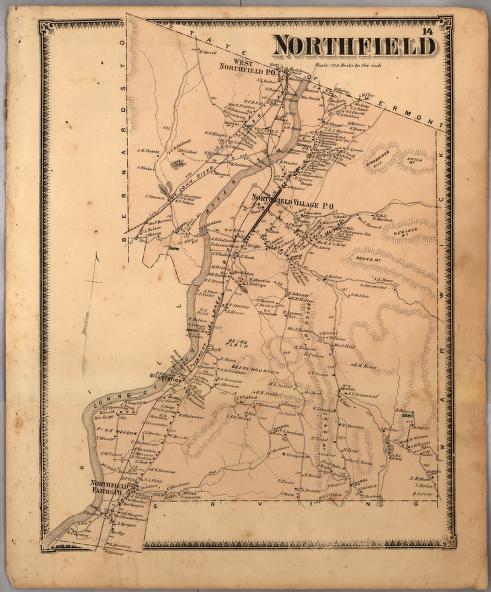Send an E-Postcard of:
"Northfield"

(c) Pocumtuck Valley Memorial Association, Deerfield MA. All rights reserved.
Contact us for information about using this image.
Its broad rich lands and proximity to the river had long made the area known as Norhfield, Massachusetts, a favorite settlement site for Native Peoples. By the 1600s, the town sat between the Pocumtuck lands to the south and the Wabenaki (Abenaki) to the north, contested but settled by the remnants of the Squakheag. When settlers from Northampton sought new settlements to the north of Deerfield they purchased the fertile lands in 1672 from the Squakheags. The first English village was named Squakheag. Besieged and then evacuated during King Philip's War (1675-76), it was resettled six years later, but again deserted in 1688 after a bloody raid. It remained unsettled, too exposed to the low-level hostilities that continued along Massachusetts' northern border, for the next twenty-five years. Finally, in 1713, at the end of Queen Anne's War, English settlers returned. By 1790, 868 people were living there and the number grew steadily to more than 1,700 by 1830. In 1879, Dwight Moody, a famous Chicago evangelist, chose Northfield for the site of two new seminaries, one for girls (The Northfield Seminary) and one for boys (The Mount Hermon Boys' School). The schools merged in 1971 as Northfield Mount Hermon School, a premier co-educational preparatory school. Today, as in the past, most of the population of the town of Northfield is located along the Connecticut River. A set of rugged, forested hills, lightly populated, lies to the east. Its total population is nearly 3,000 people, a number that has steadily grown through the decades.
top of page
|
|





